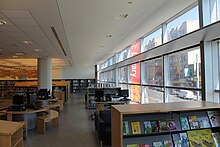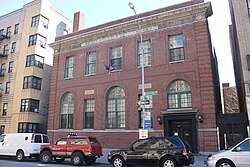
The Bronx is a borough of New York City, coextensive with Bronx County, in the U.S. state of New York. It is south of Westchester County; north and east of the New York City borough of Manhattan, across the Harlem River; and north of the New York City borough of Queens, across the East River. The Bronx has a land area of 42 square miles (109 km2) and a population of 1,472,654 in the 2020 census. If each borough were ranked as a city, the Bronx would rank as the ninth-most-populous in the U.S. Of the five boroughs, it has the fourth-largest area, fourth-highest population, and third-highest population density. It is the only borough of New York City not primarily on an island. With a population that is 54.8% Hispanic as of 2020, it is the only majority-Hispanic county in the Northeastern United States and the fourth-most-populous nationwide.
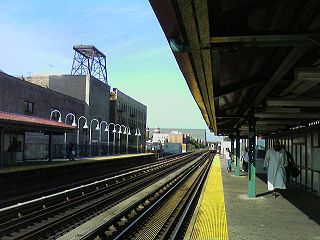
The Fordham Road station is a local station on the IRT Jerome Avenue Line of the New York City Subway. Located at the intersection of Fordham Road and Jerome Avenue in the Bronx, it is served by the 4 train at all times. This station was constructed by the Interborough Rapid Transit Company as part of the Dual Contracts and opened in 1917.

Fordham Manor is a neighborhood located in the western Bronx, New York City. Fordham is roughly bordered by East 196th Street to the north, the Harlem River to the west, Fordham Road to the south, and Southern Boulevard to the east. The neighborhood's primary thoroughfares are Fordham Road and Grand Concourse.
The Concourse Line is an IND rapid transit line of the New York City Subway system. It runs from 205th Street in Norwood, Bronx, primarily under the Grand Concourse, to 145th Street in Harlem, Manhattan. It is the only B Division line, and also the only fully underground line, in the Bronx.

Bedford Park is a residential neighborhood in the northwest Bronx, New York City, adjacent to the New York Botanical Garden. Its boundaries, starting from the north and moving clockwise are: Mosholu Parkway to the north, Webster Avenue to the east, East 196th Street to the south, and Jerome Avenue to the west.

The Grand Concourse is a 5.2-mile-long (8.4 km) thoroughfare in the borough of the Bronx in New York City. Grand Concourse runs through several neighborhoods, including Bedford Park, Concourse, Highbridge, Fordham, Mott Haven, Norwood and Tremont. For most of its length, the Concourse is 180 feet (55 m) wide, though portions of the Concourse are narrower.

The Mark O. Hatfield United States Courthouse is a federal courthouse in Portland, Oregon. It is named in honor of former U.S. Senator Mark O. Hatfield. It is used by the United States District Court for the District of Oregon.

The 155th Street station is a local station on the IND Concourse Line of the New York City Subway. It is located at the intersection of the bi-level 155th Street's lower level and Frederick Douglass Boulevard, at the border of Harlem and the Coogan's Bluff section of Washington Heights neighborhoods of Manhattan. It is served by the D train at all times except rush hours in the peak direction and the B during rush hours only. The station opened in 1933, along with the rest of the Concourse Line.
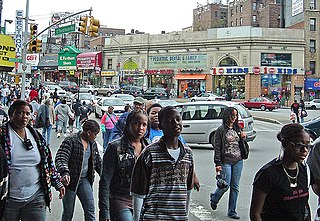
Fordham Road is a major thoroughfare in the Bronx, New York City, that runs west-east from the Harlem River to Bronx Park. Fordham Road houses the borough's largest and most diverse shopping district. It geographically separates the geopolitical North Bronx from the South Bronx.

The Kingsbridge Road station is an express station on the IND Concourse Line of the New York City Subway. Located within the Fordham Manor and Kingsbridge Heights neighborhoods in the Bronx, it is served by the D train at all times and the B train during rush hours only. It has three tracks and two island platforms.

The 161st Street–Yankee Stadium station is a New York City Subway station complex shared by the elevated IRT Jerome Avenue Line and the underground IND Concourse Line. It is located at the intersection of 161st Street and River Avenue in the Highbridge and Concourse neighborhoods of the Bronx. It is generally served by the 4 train at all times; the D train at all times except rush hours in the peak direction ; and the B train during rush hours.

Fordham Plaza, originally known as Fordham Square, is a major commercial and transportation hub in the Fordham and Belmont sections of the Bronx in New York City, New York, United States. It is located on the south side of Fordham Road at Third and Webster Avenues, at the eastern end of the commercial strip along Fordham Road that runs past Grand Concourse and Jerome Avenue to about Grand Avenue, and to the west of the Bronx's Little Italy district on Arthur Avenue in Belmont.
The West Bronx is a region in the New York City borough of the Bronx. The region lies west of the Bronx River and roughly corresponds to the western half of the borough.
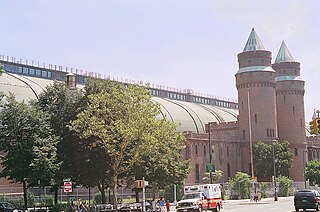
The Kingsbridge Armory, also known as the Eighth Regiment Armory, is a decommissioned armory at Jerome Avenue and West Kingsbridge Road in the Kingsbridge Heights neighborhood of the Bronx in New York City. It was built in the 1910s, from a design by the firm of then-state architect Lewis Pilcher to house the New York National Guard's Eighth Coast Defense Command, a regiment-sized unit which relocated from Manhattan in 1917. It is possibly the largest armory in the world.

The Bronx Museum of the Arts (BxMA), also called the Bronx Museum of Art or simply the Bronx Museum, is an American cultural institution located in Concourse, Bronx, New York. The museum focuses on contemporary and 20th-century works created by American artists, but it has hosted exhibitions of art and design from Latin America, Africa, and Asia. Its permanent collection consists of more than 800 paintings, sculptures, photographs, and works on paper. The museum is part of the Grand Concourse Historic District.

The Edgar Allan Poe Cottage is the former home of American writer Edgar Allan Poe. It is located on Kingsbridge Road and the Grand Concourse in the Fordham neighborhood of the Bronx, New York, a short distance from its original location, and is now in the northern part of Poe Park.
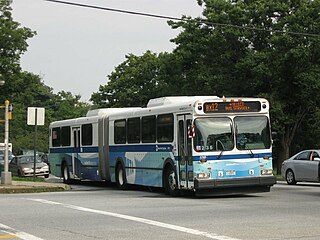
The Bx12 is a public transit line in New York City running along the 207th Street Crosstown Line, within the boroughs of Manhattan and the Bronx. The line runs along 207th Street in Upper Manhattan and along the continuous Fordham Road and Pelham Parkway in the Bronx.
Fordham Hospital was the first public hospital in the Bronx, New York City, having opened in 1892. Prior to that time, all the New York City municipal hospitals were in Manhattan. It was located in the Fordham section of the Bronx on Valentine Avenue near Kingsbridge Road, which at the time was a relatively undeveloped area, and inconvenient for patients and their families. It moved to Aqueduct Avenue and St. James Place in 1898.
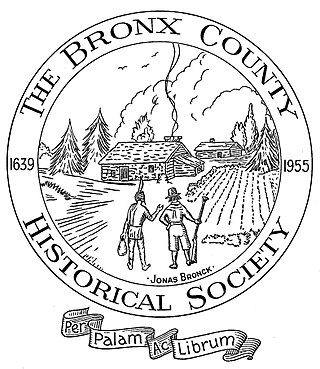
The Bronx County Historical Society is a private non-profit organization that collects and disseminates historical material and information about the New York City borough of the Bronx, as well as southern Westchester County, New York.

The Greenstone Building, officially the Greenstone Government of Canada Building, and sometimes known as the Greenstone Government Building, is located on Franklin (50th) Avenue in downtown Yellowknife, Northwest Territories, Canada. It is a four-storey building faced in stone, completed and opened in 2005. Within are the local offices of 16 federal government agencies. Prior to the building's construction they were scattered in different buildings around the city.


